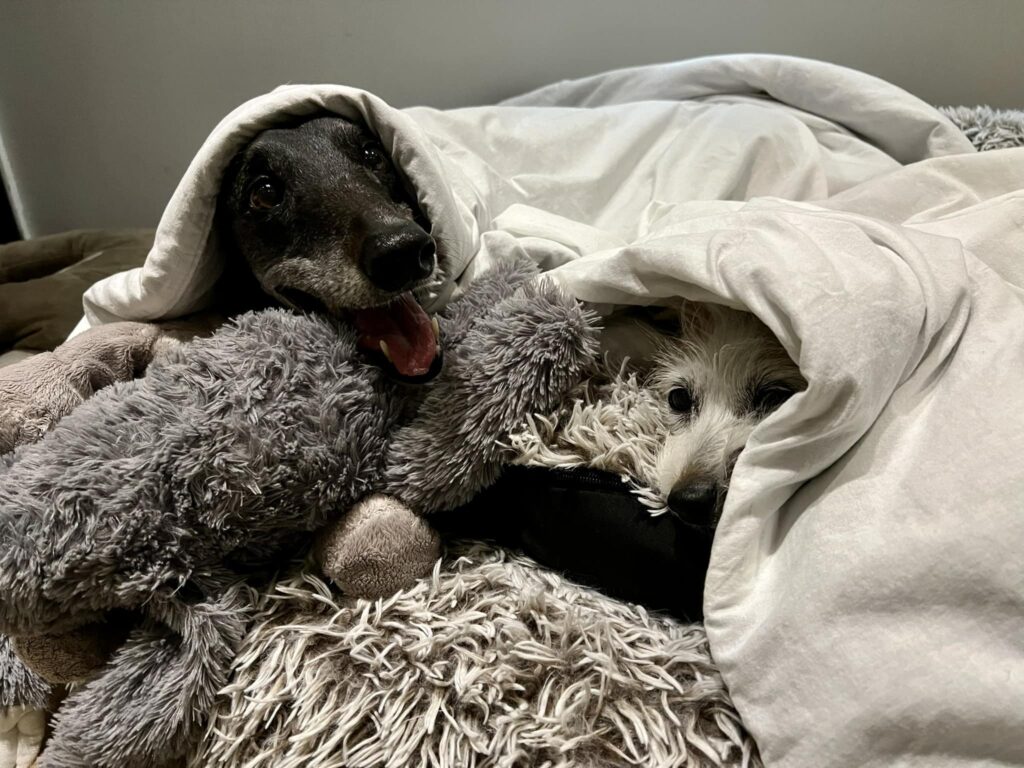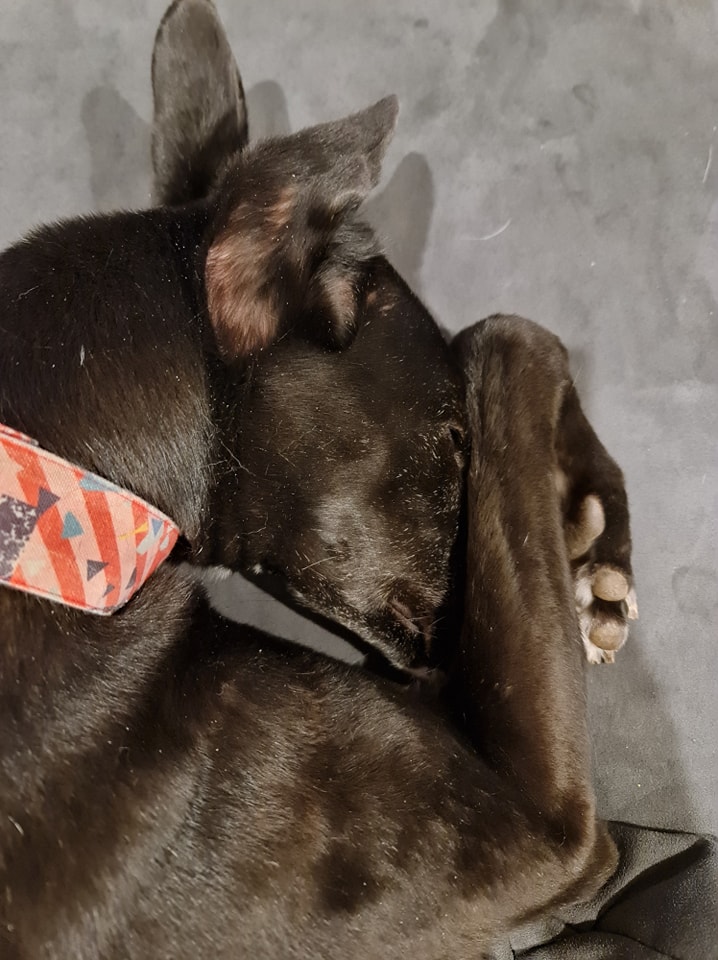As the storm clouds roll in you might notice your hound start to pant, pace, cry and tremble. Unfortunately, fear of thunderstorms is a common phobia experienced by our pooches. We’ve put together some steps you can take to make your hound feel more comfortable and reduce their stress.

Try to identify your hound’s trigger
While similar to a noise phobia, when it comes to storms there are a number of aspects that could be triggering your pet’s anxiety. The thunder vibrations, sound of heavy rain, flashes of light, they may even be able to sense a change in barometric pressure. If you can identify what specifically your hound finds frightening, you can start desensitisation training. More on that below.
Exercise first
If you know a storm is on the way, be sure to provide your hound with physical exercise beforehand. With any luck, they’ll be so tired they’ll sleep right through it!
Stay indoors and close the blinds!
Please bring your hound indoors during a storm. Unfortunately, too many dogs try to run away when left outside during a storm, attempting to find safety. When everyone is safely inside, draw the blinds and turn on the lights – whatever you can do to block out the flashes of lightening that can be quite scary for a hound.
Create a Safe Space

This can be in a room with you, or a back room far away from any sounds. You can use a playpen with a comfy bed, a covered crate or space at the bottom of a hallway or bedroom cupboard (leave doors open so they can come and go). Leave the area filled with some favourite items such as a toy or a blanket, and some appropriate items to keep them occupied (such as a pig’s ear, licki mat, snuffle mat or a stuffed Kong). Both chewing and licking help to reduce stress levels.
If you have a laundry room, you may like to have your hound stationed in there with a comfy bed. Run the washer and dryer at the same time, and it will drown out a good amount of the noise. You can play calming music as well for an extra layer of sound. It’s recommended to do this regularly (just for short periods of time) and at different times of the day when there are no storms so the dog doesn’t begin to associate the laundry room with storms.
Consider calming aids
Thunder shirts, Adaptil collars and diffusers, Zylkene and weighted blankets are just a few of the calming aids available for your hound. They’re all designed to ease the stress your pooch experiences during a thunderstorm. However, if your hound is experiencing severe anxiety, speak to a behaviour vet about stronger medication options. These should be used in conjunction with the aids above, none are a solution on their own.
Comfort your dog
People worry that comforting a dog while they’re stressed can reinforce unwanted behaviours. You cannot reinforce fear. It is an emotion not a behaviour. If they want your reassurance and love when they’re scared, give them that reassurance and love.

Sooth with sounds
Play some tunes, whether you opt for classical music or search for a ‘relaxing music for dogs’ playlist. This will help you drown out the noise of the storm and calm your hound.
Start a Counterconditioning & Desensitisation Program
The idea here is to change your dog’s emotional response to storms. Find some storm sounds (YouTube and Spotify both have these) and play them on a low volume. Give your dog a high value reward, whether that’s a toy to play with or a yummy food treat. Gradually increase the sound of the storm noises slowly – do this through multiple short sessions over a period of days or weeks, not all in the one session. If your dog becomes visibly stressed at all by the increased volume, go back to volume they are comfortable with. Continue this desensitisation and increase the volume VERY gradually.
Our top tips:
- The “treat” (food or play) has to be highly desirable so that the emotional response it elicits is more powerful than any fear elicited by the thunder.
- The thunder or storm sound has to come first so that it becomes a predictor of something good. For example, play a short snippet of thunder at a low volume and immediately after the sound, start playing with the toy or give the food reward. Repeat this just a few times in a row (this is a ‘session’), and repeat the session multiple times a day. Gradually link louder sounds with the food or play.
Fireworks are another huge stressor for our pooches. A lot of the suggestions above will apply, however you can also access some great information here.

